Continuation of the Russian career of the Irishman Lassi. Colonel becomes lieutenant general
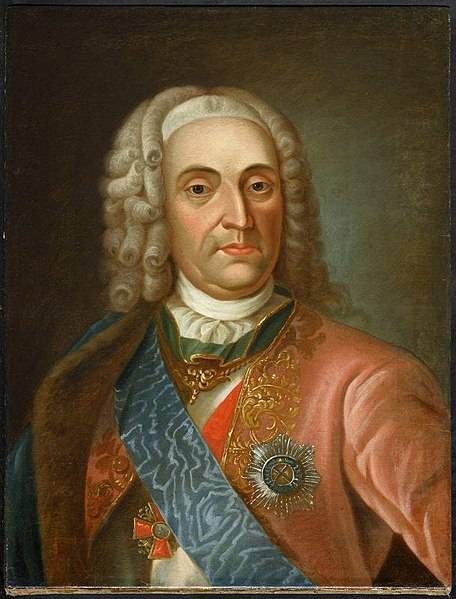
P. Lassi in a portrait of the XNUMXth century. works by unknown artist
В previous article it was told about the youth of Peter Lassi, the beginning of the Northern War and the military path of this Irish officer from the unfortunate battle of Narva to the brilliant Battle of Poltava. Today we will continue this story.
Swedish shame at Perevolochnaya
After the Battle of Poltava, Peter I made an obvious mistake: having arranged a feast with the captured “teachers,” he forgot to give orders to pursue the enemy army. Only late in the evening were the dragoons of R. Bour and M. Golitsyn sent in pursuit of the Swedes, and the next day Alexander Menshikov, who was entrusted with general leadership, joined the pursuit. However, it was this mistake that led to the unheard-of shame of the surrender of the Swedish army at Perevolochnaya. Menshikov was late, and Charles XII had already managed to cross the Dnieper, but there is no doubt that if the king had still remained with his troops, the Swedes would have easily repulsed the attacks of the Russian dragoons, who were significantly inferior to them in numbers. Now the Swedish troops were led by the morally broken General Adam Ludwig Levenhaupt, who had been defeated at Lesnaya before Poltava. Some of the Swedish soldiers panicked, but there were enough people ready to fight to organize a defense. Moreover, as the Swedish general Kreutz later claimed, the horses of the Russian dragoons literally fell off their feet from fatigue, and the people were also extremely tired. But Levenhaupt declared at the military council that
The defeat of the Swedes near Poltava and the subsequent capitulation of their army near Perevolochnaya became a sensation on a pan-European scale. What especially shocked everyone was the surrender of the seemingly invincible soldiers of Charles XII. The British Ambassador Charles Whitworth, for example, reports:
The Danish ambassador Georg Grund was also completely at a loss, writing:
In fact, the Swedes themselves calculated that 18 people surrendered at Perevolochna without a fight. Among them were Field Marshal Rönschild, generals Schlippenbach, Roos, Hamilton, Stackelberg and the head of the royal campaign office, Karl Pieper. Alexander Menshikov, who accepted their surrender, had 367 thousand cavalrymen at his disposal. Russian trophies included 9 guns, 21 howitzers, 2 mortars, 8 banners and 142 thousand thalers.
Having learned about these events, Stanislav Leszczynski chose to renounce the Polish crown - the Saxon Elector Augustus the Strong, an ally of Peter I, again became king of the Polish-Lithuanian Commonwealth. Charles XII also surprised everyone, who, instead of intensively preparing for revenge, sat in Bendery for 5 years, withdrawing pretending to be the Sultan and Turkish officials, as well as selflessly fighting with the Janissaries guarding him (who called him “Demirbash”, that is, “iron head”). What gave these “battles” a special charm was the fact that the Janissaries protected him from a possible attack by the Russians and, more than anything else, were afraid of causing the “distinguished guest” even the slightest harm. This was discussed in the article "Vikings" against the Janissaries. The incredible adventures of Charles XII in the Ottoman Empire, published December 18, 2019.
Meanwhile, the neighbors were already preparing to tear the Kingdom of Sweden apart. Prussia laid claim to Pomerania. Mecklenburg intended to annex Wismar. Denmark wanted to receive the Duchy of Bremen and Holstein. In the east, Russian troops continued to gain victories. In June 1710, Vyborg was taken (Peter I called it “St. Petersburg's strong pillow"), in July - Gelsinfors (Helsinki). In October of the same year, Revel (Tallinn) and Riga fell, the commandant of which, as we remember, was the hero of our article, Peter Lassi. But in 1711, the series of victories of the Russian army was interrupted by the humiliating defeat of the adventurous and extremely poorly prepared Prut campaign. This is how the future first emperor of Russia himself imagined this expedition:
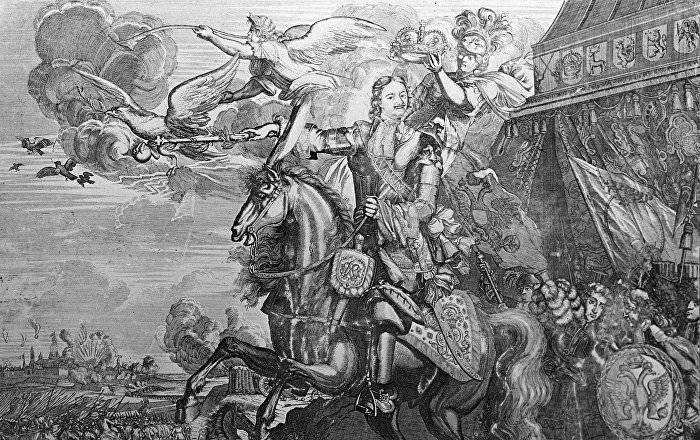
Allegorical image of the Prut campaign, made before it began
However, Peter I then successively, one after another, repeated all the mistakes of the Russian campaign of Charles XII - and he himself admitted it. Aubrey de la Mottere claims that, seeing his army surrounded, the Russian autocrat said to his generals:
Then
Prut trip
Sultan Ahmet III was called to war with Russia by Charles XII, who was in Bendery, who pointed out that Russia was now forced to keep its main forces on other fronts. The French Ambassador Desalliers spoke about the same thing. Among the supporters of the new war were Akhmet’s mother, Emetullah Rabia Gulnush Sultan, the Grand Vizier Baltaci Mehmet Pasha and the Crimean Khan Devlet Giray II.
This is how we see Akhmet III in the miniature of his court painter Levni Abdulselil Celebi. By the way, this Sultan is often compared to Peter I:
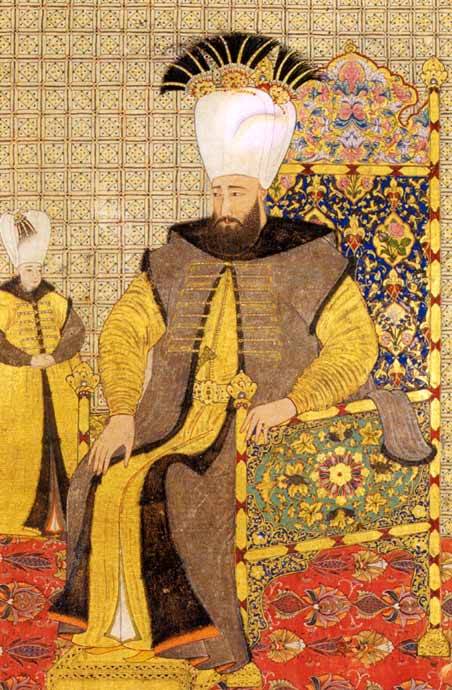
And this is Emetullah Rabia Gulnush Sultan, the mother of the Ottoman Sultans Mustafa II and Ahmed III, the daughter of a Greek priest from the city of Rethymno (the island of Crete, which then belonged to Venice), who fell into slavery at the age of three, her Christian name is Eumania Voria:
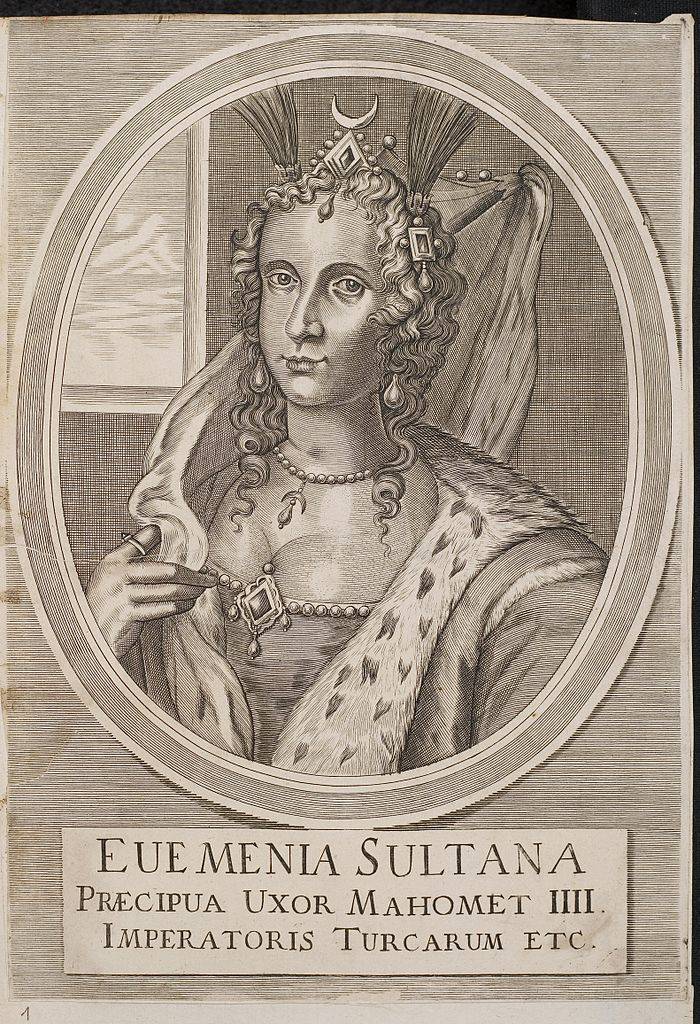
Arolsen Klebeband. Portrait of Emetullah Rabia Gulnush Sultan
And the Grand Vizier Baltaci Mehmet Pasha, who came from a family whose men were engaged in collecting firewood (“balta” - “axe”):
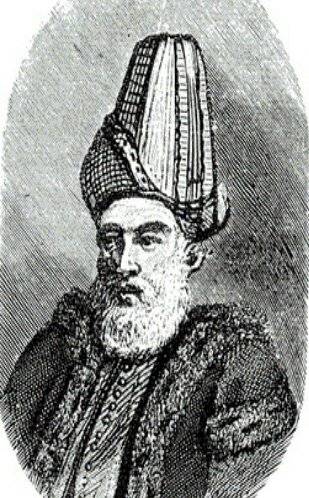
On November 9, 1710, the Ottoman Empire declared war on Russia. The fighting began in January 1711, when the Crimean Tatars attacked Ukrainian lands. On January 10, 1711, the Russian army marched from Riga to Kyiv, the commander of which Peter I traditionally appointed B.P. Sheremetyev. In this army were Y. Bruce, A. Repnin, A. Weide, who distinguished themselves at Poltava, and the hero of our article, Pyotr Lassi, whose regiment was part of Repnin’s division. Unfortunately, Peter wanted to take part in this campaign himself, and his stubbornness, and then his state of panic, became the main reasons for the ensuing disaster.
As already noted, the preparation for the trip was simply disgusting. Its participant, the commander of the dragoon brigade, the Frenchman Moreau de Braze, states in the book he published in 1735:
In addition, in the Russian army there were a huge number of wives of generals and senior officers, who, according to the testimony of the same Brose, occupied “more than two thousand five hundred carriages, carriages, small and large carts" Some of the transport carts turned out to be loaded not with crackers and cereals for the soldiers (of which very few were taken anyway), but with exquisite foods and wine for people of the “noble class”.
The recent successful experience of defeating the Swedes at Poltava required choosing defensive tactics: giving the Ottomans the opportunity to move forward, losing both people and horses, suffering from infectious diseases, hunger and thirst. Instead, Peter decided to defeat the enemy on his territory. The Russian Tsar also had his own “Mazepas” - the Wallachian ruler Constantin Brancovan (Brincoveanu) and the Moldavian Dmitry Cantemir, who promised to raise an anti-Turkish uprising in their lands and provide the Russian army with food and fodder. Peter also hoped for the Serbs and Bulgarians, he wrote to Sheremetyev:
The last attempt to prevent a catastrophe was made by the Scottish general in Russian service Ludwig Nikolai von Allart, who on June 14 (25) at a military council advised to take positions on the Dniester and wait for the Turks at the crossing.
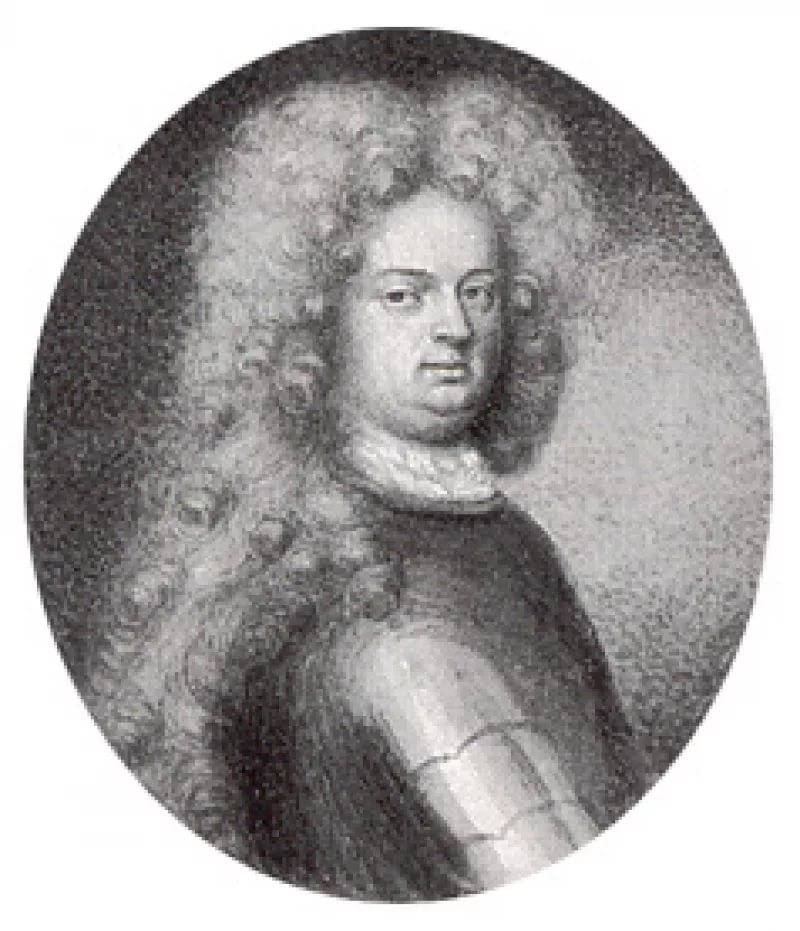
Ludwig Nicholas von Allart
But Peter I, who was experiencing a severe attack of “dizziness from success,” rejected this reasonable proposal. It soon became clear that during the journey the Russian army lost 19 thousand people from disease, hunger and thirst, and another 14 thousand soldiers were left to guard communications. Potential allies also failed: Brancovan completely abandoned the war with the Ottomans, Cantemir brought about 6 thousand poorly armed ragamuffins and, citing drought and a locust invasion, did not deliver the promised food. Allart suggested staying in place to put the troops in order and wait for the Turks at a previously prepared position. But Peter I not only ordered to move further along the right bank of the Prut River (towards Wallachia), but also divided the army, sending General K. Renne to the Danube fortress of Brailov. As a result, Russian troops were surrounded by superior forces of the Ottomans and Tatars. The situation was critical, but the fierce resistance of the Russian soldiers caused confusion both among ordinary Turks and in the ranks of the high command. The British Ambassador Sutton recalled:
The French agent La Motreuil, who was in the Ottoman army, stated:
And the head of the Janissary corps reported to the Sultan:
The Polish general Poniatowski recalled that the kegaya, that is, the deputy commander-in-chief of the Ottoman army, told him then:
At the military council, the generals of the Russian army suggested that Peter burn the carts,
And this was quite possible and feasible. In August 1739, already under Anna Ioannovna, the army of Minich, a comrade-in-arms and rival of Peter Lassi, found itself in a similar situation. Near Stavuchany, it was surrounded by superior forces of the Ottoman troops of Seraskir Veli Pasha and for two days was subjected to continuous attacks from all sides. Finally, on August 17 (28), Minich launched a demonstrative offensive on the enemy’s right flank, but unleashed a powerful blow on the left flank. Result: the Russians lost 13 soldiers killed, the Turks - about a thousand. This is the most bloodless victory in the history of the Russian army. And Minich, the commander whom slanderers accused of being
P. A. Rumyantsev also acted decisively in 1770: at the head of 17 thousand soldiers and several thousand Cossacks, he was surrounded by a 150 thousand-strong Turkish-Tatar army - and defeated it.
And in July 1711, the fate of the campaign hung in the balance; everything could have turned out completely differently. But Sovereign Peter Alekseevich fell into a state of panic, who, according to R. Erebo, on July 21
Yust Yul also reports:
To complete this picture, “the officers' wives, of which there were many, howled and cried endlessly"(Yust Yul).
And therefore it was decided to make peace with the Turks on any terms. And the position of the Turks was such that the Grand Vizier did not even respond to the first two letters with a proposal for peace negotiations, because he decided that the Russians were trying to somehow deceive him. Moreau de Braze, mentioned above, claims that he asked one of the Ottoman pashas about the reasons for concluding peace:
By the way, having learned about the Turkish encirclement of the Russian army, Charles XII, who was in Bendery, went on horseback to the Turkish camp (he rode 120 versts without stopping), but the Russian troops had already left - just an hour ago. Karl begged the vizier to give him part of the Turkish army and promised to bring Peter I with a rope around his neck, but received a mocking answer:
Enraged Charles, before leaving the tent, with a sharp blow of his spur tore the hem of the vizier's robe - and Baltaci Mehmet Pasha became the enemy of the Swedish king.
On August 1, at Mogilev, Sheremetyev, in a letter to Peter I, especially noted “Colonel Lesya” and Brigadier Staff, recommending them for promotion in rank. The corresponding decree was signed by Peter two days later, after which Brigadier Lassi was sent ahead of the army to “prepare proper quarters, food and fodder».
One of the most humiliating, but surprisingly tenacious myths of Russian history is associated with the conclusion of the Prut Peace - about the bribery of the Ottoman commander-in-chief of the Turks by the wife of Peter I, Catherine. These rumors were spread throughout Europe by Charles XII, who wanted not only to disgrace Peter, but also to “frame” his enemy, the Grand Vizier (and Commander-in-Chief) Baltaci Mehmet Pasha. This ridiculous version, it seemed, was soon forgotten. But when Catherine unexpectedly ascended the throne in 1725, a certain Rabiner published a book in Leipzig in which he included a story about how the new Empress once allegedly saved the first Russian emperor from captivity. None other than Aubrey de la Mottre, a French Huguenot emigrant who became an agent of Charles XII, wrote on this matter:
And further:
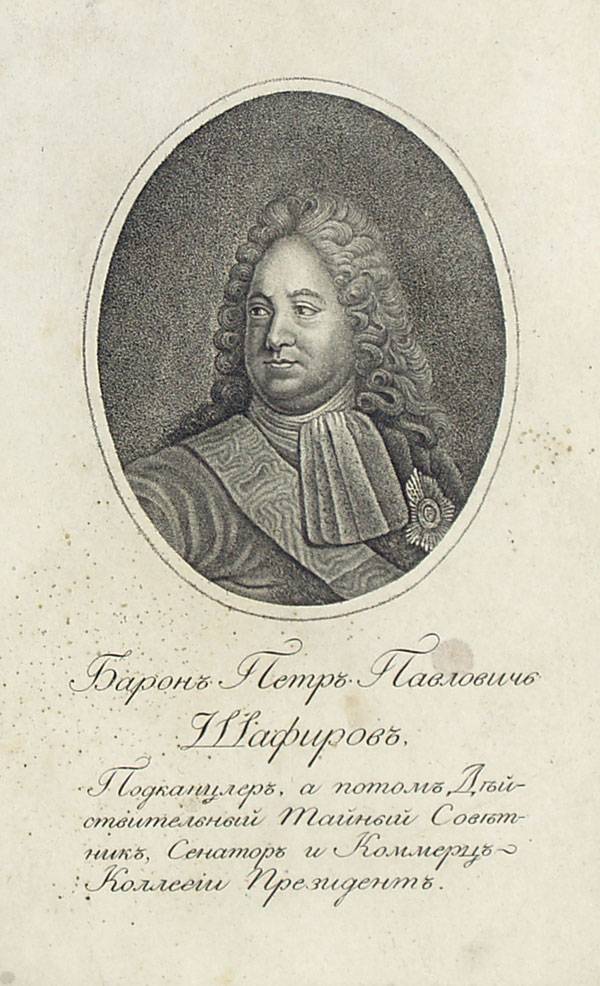
Pyotr Shafirov in a portrait by an unknown artist
In 1732, Voltaire repeated Rabiner's stupid version in a book about Charles XII. And, as they say, “off we go.” But even Pushkin, who studied the circumstances of this case while working on “The History of Peter,” made a note: “It's all nonsense».
In fact, even Baltaci Mehmet Pasha's numerous opponents did not dare to accuse him of taking a bribe. The English envoy Sutton writes that the vizier's behavior:
Yes, Shafirov came to the vizier with gifts - because Ottoman etiquette prescribed to show respect to the person with whom you need to talk about business, and there was even a special institution for recording such gifts and deducting interest from them to the treasury. And these were gifts not from Catherine, and not even from Peter I, but from Field Marshal Sheremetyev:
The results of the Prut campaign were sad: the Russian army lost 2872 people in battles, and 24 from disease, hunger and thirst. Russia was forced to leave the hard-won lands with fortresses, including Azov, Taganrog, and Kamenny Zaton. It was necessary to burn the Azov fleet (more than 413 ships) and withdraw troops from Poland, and refuse to interfere in the affairs of the Zaporozhye Sich. Peter I even agreed to resume paying tribute to the Crimean Khan.
British Ambassador Sutton reports:
Russia even lost the right to keep an ambassador in Istanbul and had to communicate with the Ottoman government through the Crimean Khan.
Having escaped captivity, Peter I, taking Catherine with him, went to improve his health on the waters of Carlsbad. Almost all foreign officersin the name of his royal majesty" thanked "for the services they rendered, especially during this last campaign"and was fired without pay. The mentioned Moreau de Braze wrote 24 years later:
As you can see, D. Medvedev was not at all original in his wishes for “a good mood and more health.” Fans of “saving” money under the motto “No money but you hold on“occur in our country with unenviable regularity.
However, Peter Lassi remained in the Russian service, was promoted, and in the same 1711 he married Martha Philippine von Funcken (widow of the Swedish Count Hans Christopher Fröhlich), who bore him 9 children - 4 sons and 5 daughters. One of Lassi's sons, Franz Maurice, became an Austrian imperial marshal.
Continuation of the Russian service of Peter Lassi
The following year, 1712, Repnin's division, which included the Lassi grenadier regiment, was sent to fight in Pomerania. And again Lassi walked ahead, providing forage and provisions. Looking ahead a little, let's say that for the successful completion of this assignment in September he will receive the rank of major general.
In Thorn, Lassi received orders to act against either Grudinsky or Grazensky, a Pole who is called “partisan of the Swedish king" Let us recall that “parties” (also known as “flying detachments”) at that time were regular military formations that operated separately from the main forces. Their military personnel were called partisans (armed groups of civilians in those days were called “cordons”). Grazensky managed to burn down one of the Russian military warehouses, but, having learned about the approach of Lassi, he chose not to engage in battle, but to retreat to Silesia.
In 1713, P. Lassi took part in the battle of Friedrichstadt, and “under the direct command of Peter I" According to the plan for this battle, presented by Maslovsky, the Lassi regiment acted in the center. Then the hero of our article was among the troops besieging Stettin. Historians have information at their disposal that major generals
Lassi entered Stettin with Russian troops. This city, by the way, was transferred to Prussia as payment for joining the anti-Swedish Northern Alliance.
The formations of Repnin's division were taken to Russia by Brigadier Treiden for winter quarters, settling down "from Luk to Pskov and in Pskov" Repnin spent the winter in Livonia and Estland; of the senior officers, he kept only Lassi with him, which speaks of the high authority that this Irishman already enjoyed in Russian service.
On the northern fronts, the Russian armies and navy generally acted very successfully. On July 27 (August 7), 1714, the Russian fleet won a victory near the Gangut Peninsula (currently Hanko). Peter I received the rank of vice admiral for his participation in it. And on May 24 (June 4), 1719, the Russian fleet won a battle near the island of Ezel (Saarema).
Meanwhile, in 1714, after a 5-year stay on the territory of the Ottoman Empire, Charles XII returned to Sweden. On November 30, 1718, under unclear circumstances, he died during the siege of the Norwegian fortress Fredriksten. Many researchers believe that the king was killed by one of the Swedes, and not with a bullet, but with a button cut from one of his uniforms and filled with lead. This version was confirmed in 1924, when at the site of Karl’s death, a local blacksmith found a button, the diameter of which coincided with the diameter of the bullet hole in the king’s hat. Analysis of DNA traces on this button and on the royal gloves showed the presence of a rare mutation found only in Sweden.
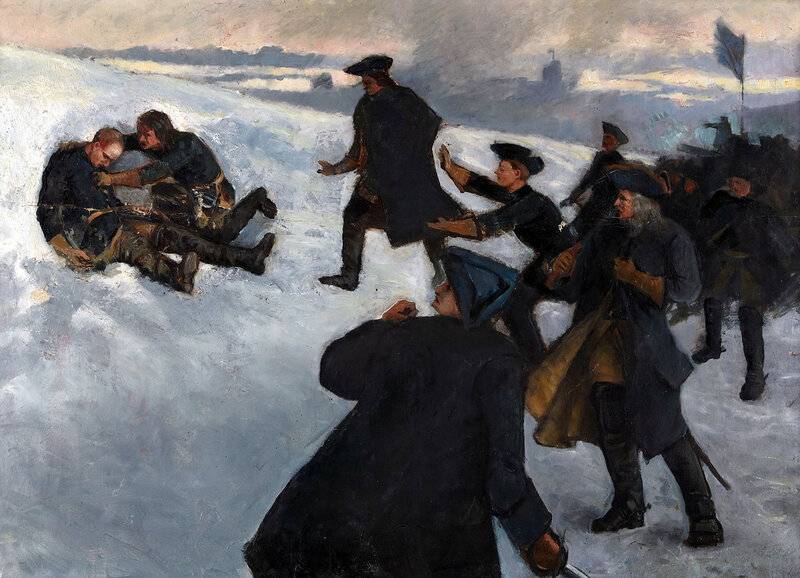
Carl Gustaf Cederstrom. Death of Charles XII
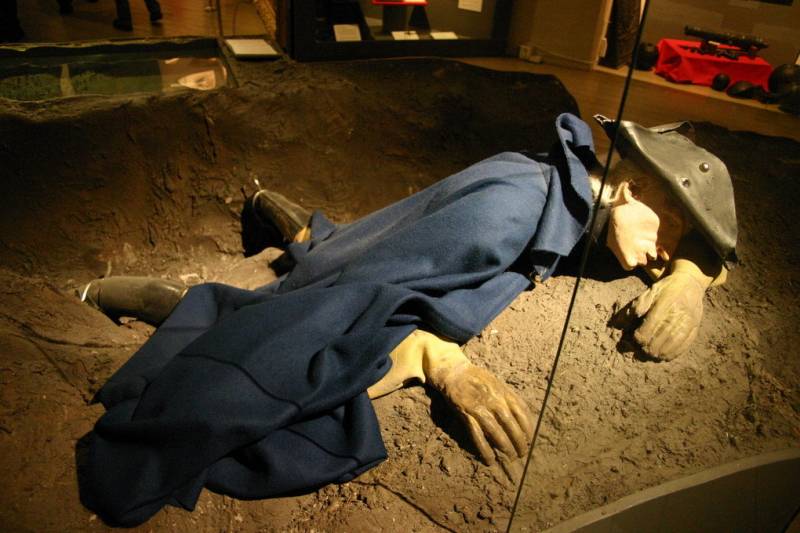
Reconstruction of the death of Charles XII on November 30, 1718 in the front trench near the besieged fortress
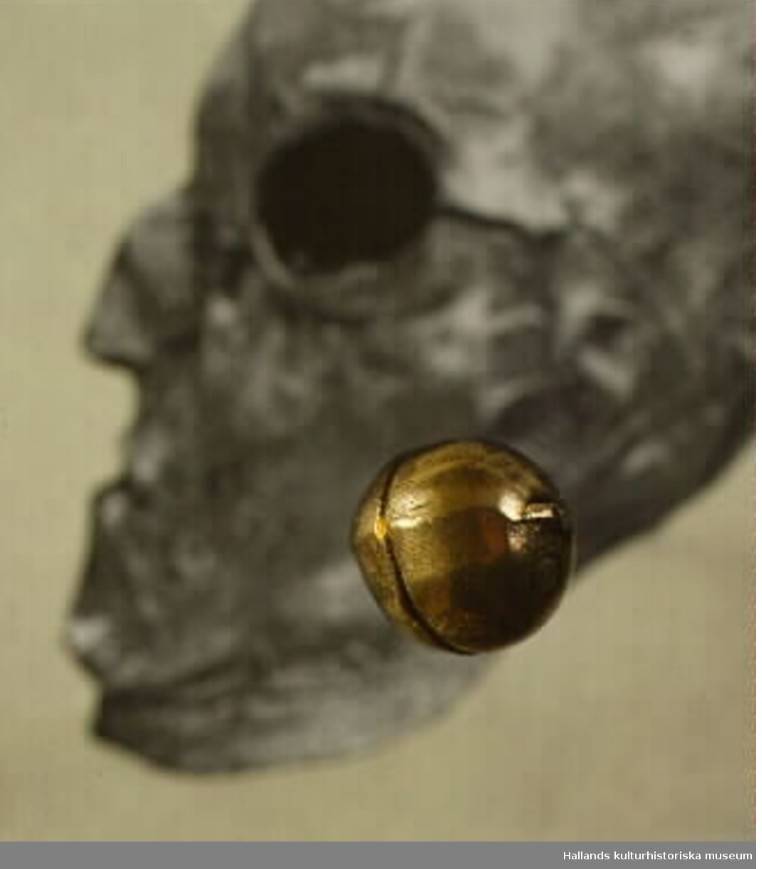
The same button that was found by the blacksmith Carl Andersson
Charles XII was succeeded by his sister, Ulrika-Eleanor.
But let's return to Peter Lassi - in 1716 we will see him at the head of three regiments (two guards and Astrakhan), which were often used as marines. A joint landing with the Danes on the Swedish coast was planned. Three Russian ships built in Amsterdam (Portsmouth, Devonshire and Malburg), four Arkhangelsk ships (Uriel, Selafail, Varachail and Yagudiel), Sivers' squadron of 13 arrived in Copenhagen ships (seven battleships, 3 frigates and 3 shnyavas) and Zmaevich's galleys. But it all ended in a huge scandal. Peter I accused the Danes of wanting to conclude a separate peace treaty with the Swedes, the Danes accused him of trying to capture Copenhagen - and brought the capital's garrison to a state of full combat readiness. Further - more: the English king George I demanded the withdrawal of Russian troops from Germany and Denmark and sent Admiral Norris an order to block the Russian fleet. Fortunately, Norris showed prudence at the time: citing some inaccuracies in the wording, he asked for confirmation. By that time, the ministers had convinced George that breaking off relations with Russia would be unprofitable for Britain, since it would lead to the arrest of English merchants and the cessation of imports of strategically necessary goods. Russian ships left Copenhagen, infantry units retreated to Rostock and Mecklenburg, and cavalry to the Polish border. But in order to show everyone that the alliance between Russia and Denmark was not destroyed, one cavalry regiment was left on the territory of this kingdom.
Turning point in the Northern War
In July 1719, the galley fleet of Admiral General F. M. Apraksin attacked the coast of Sweden. The first landing force was led by Apraksin himself: they managed to capture the cities of Sørdetelje and Nyköping, the city of Norrköping was burned by the Swedes themselves, and they also sank 27 of their own merchant ships in its harbor. In addition, iron and copper factories on the island of Ute were destroyed, and on the island of Nekvarn, a cannon factory and 300 already manufactured artillery pieces were captured. The second detachment, commanded by Peter Lassi (about 3500 people), destroyed factories in the vicinity of the city of Gävle and defeated in two battles the Swedish detachments that tried to stand in his way. 10 guns became trophies. And in August, the Russians landed on both sides of the Steksund fairway and approached the Vaxholm fortress, which defended Stockholm. The results of these operations were very impressive: 8 cities and 1363 villages were captured, 140 country houses and castles of Swedish aristocrats were burned, 21 factories, 21 mills and 26 military warehouses were destroyed. The following year, 1720, Russian marines were already operating in the immediate vicinity of Stockholm, S. Solovyov wrote about this:
Queen Ulrika-Eleanor was forced to resume peace negotiations. And Lassi received the rank of lieutenant general.
July 27 (August 7), 1720 (on the same calendar day as under Gwegut 6 years ago) near the island of Grengam to the Russians fleet Another victory was won over the Swedes. In honor of these victories, the Panteleimon Church was built in St. Petersburg in 1735.

Sweden no longer had the resources for a further war, and on August 30 (September 10), 1721, a peace treaty was signed in Nystadt (currently Uusikaupunki, Finland), which consolidated Russian conquests in the Baltic states. The Swedes “sold” Ingria, Karelia, Estland and Livonia to Russia for 2 million thalers - a huge amount, but that’s exactly how many gold Saxon thalers were captured from the Swedes after the Battle of Poltava, and about 700 thousand more from Perevolochnaya.
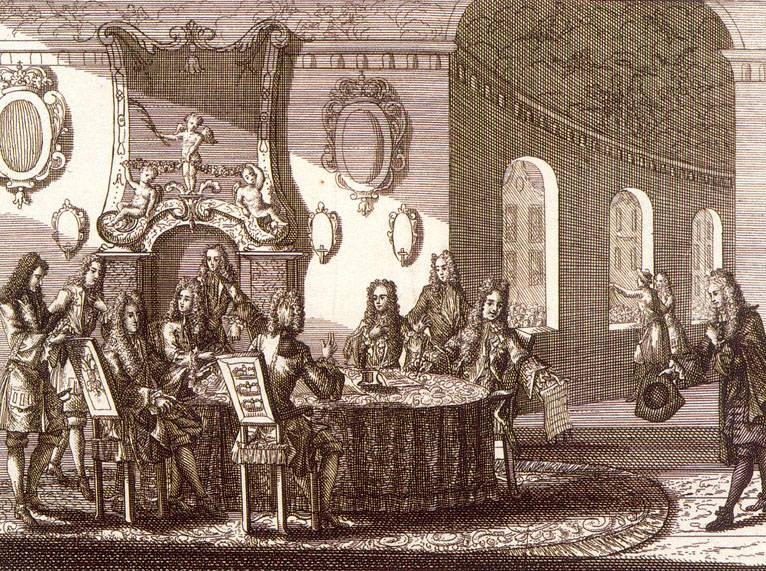
Peter Schenk. The signing of the peace treaty in Nishtadt on August 20, 1721
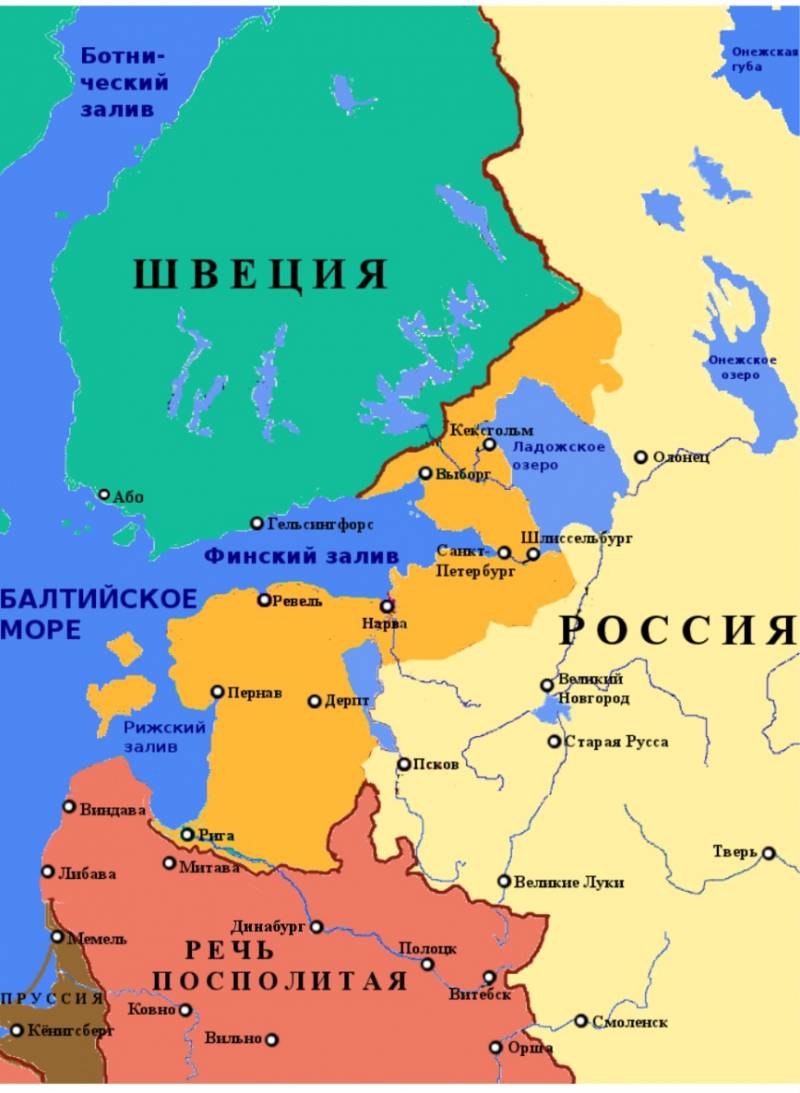
Territories that became part of Russia under the terms of the Nistadt Treaty
On October 22 (November 2), 1721, Peter I accepted the title of Russian Emperor, which was first recognized by Prussia and Holland, and in 1723 by Sweden. But other states initially refused to recognize the imperial title of Russian monarchs. Turkey recognized it as Anna Ioannovna in 1739. Elizaveta Petrovna achieved recognition of herself as Empress of England and Austria in 1742, and Spain and France in 1745. And Catherine II was recognized as empress in 1764 by her former lover Stanislav Poniatowski, who with her help became the last king of the Polish-Lithuanian Commonwealth.
As for Lassi, from 1723 until the death of Peter I (January 28, Julian style, 1725), he was a member of the Military Collegium.
The next article will talk about the peak of the military and military leadership career of Pyotr Petrovich Lassi.
Information